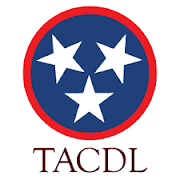In 1992 the Tennessee Supreme Court adopted a system of modified comparative fault in McIntyre v. Balentine, 833 S.W.2d 52 (Tenn. 1992) (adopting the "49 percent" rule where a plaintiff must be found to be no more than 49 percent at fault to recover).
Based upon McIntyre, we all know that the trier of fact determines damages and assigns a percentage of fault to parties in the lawsuit. Here's the all-important question: Can fault be assigned to an unknown, or "phantom," tortfeasor? The answer is no, with one exception.
In Brown v. Wal-Mart Discount Cities, 12 S.W.3d 785 (Tenn. 2000) the Court wrote:
[W]e conclude that a defendant may not attribute fault to a nonparty who is not identified sufficiently to allow the plaintiff to plead and serve process on such person pursuant to Tenn. Code Ann. § 20-1-119, even if the defendant establishes the nonparty's existence by clear and convincing evidence...."
Id. at 789.
As such, a defendant is not permitted to blame an "empty chair" at trial. Fault can only be assigned to those who have been properly identified under the Rules of Civil Procedure. See Tenn. R. Civ. P. 8.03 (to invoke comparative fault as an affirmative defense a defendant must plead facts and state the identity of any alleged tortfeasor).
The one exception to this proscription is in the underinsured motorsist context. See Marler v. Scoggins, 105 S.W.3d 596 (Tenn. Ct. App. 2002) (allowing for fault to be allocated to a "phantom tortfeasor" in an underinsured motorist context).
Bottom line: if a defendant attempts to plead the fault of nonparties insufficiently (i.e., his or her answer doesn't comply with Rule 8.03's requirement of stating both facts and identity) file a motion to strike under Rule 12.06. See Tenn. R. Civ. P. 8.03, 12.06. Do this after the answer has been on file for fifteen but less than thirty days. See Tenn. R. Civ. P. 15.01.
Here's the link to the slip opinion in Brown from the Tennessee Administrative Office of the Courts' Web site:






No comments:
Post a Comment